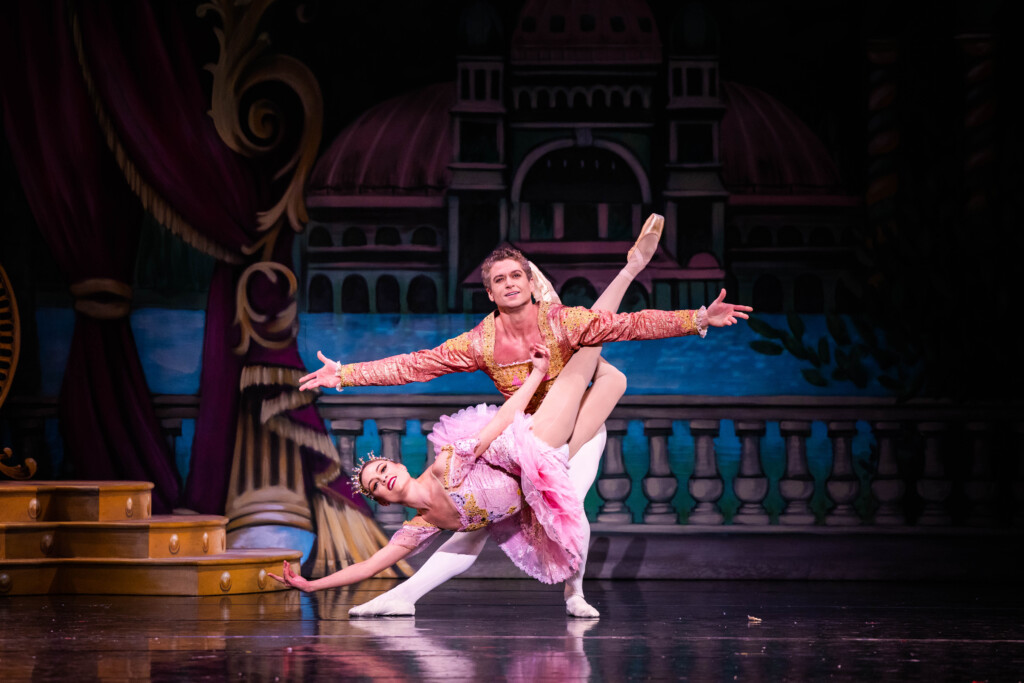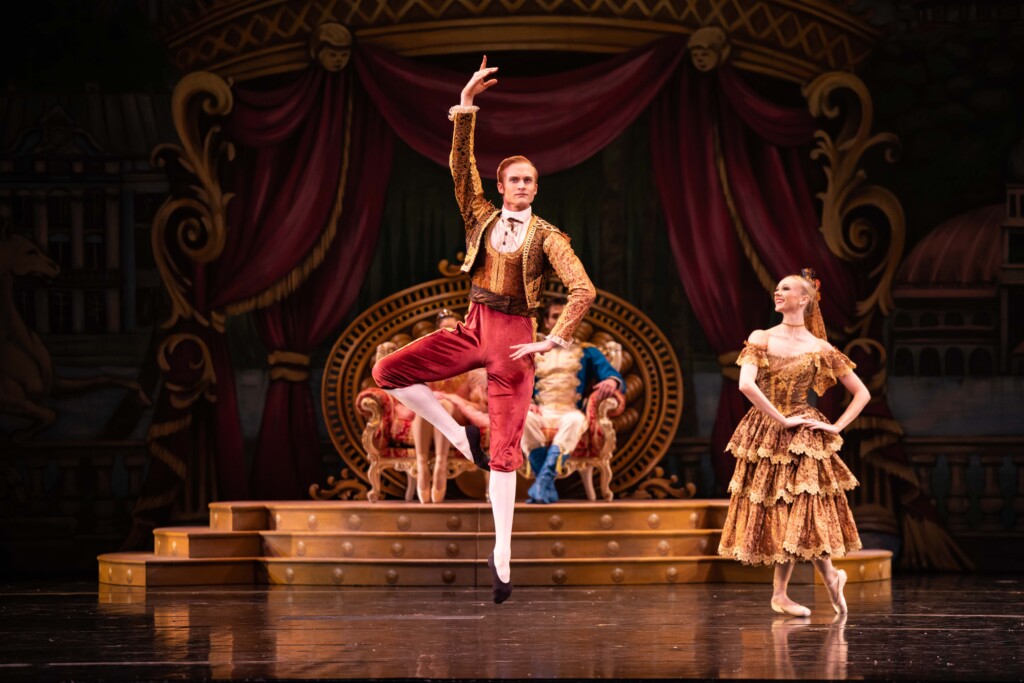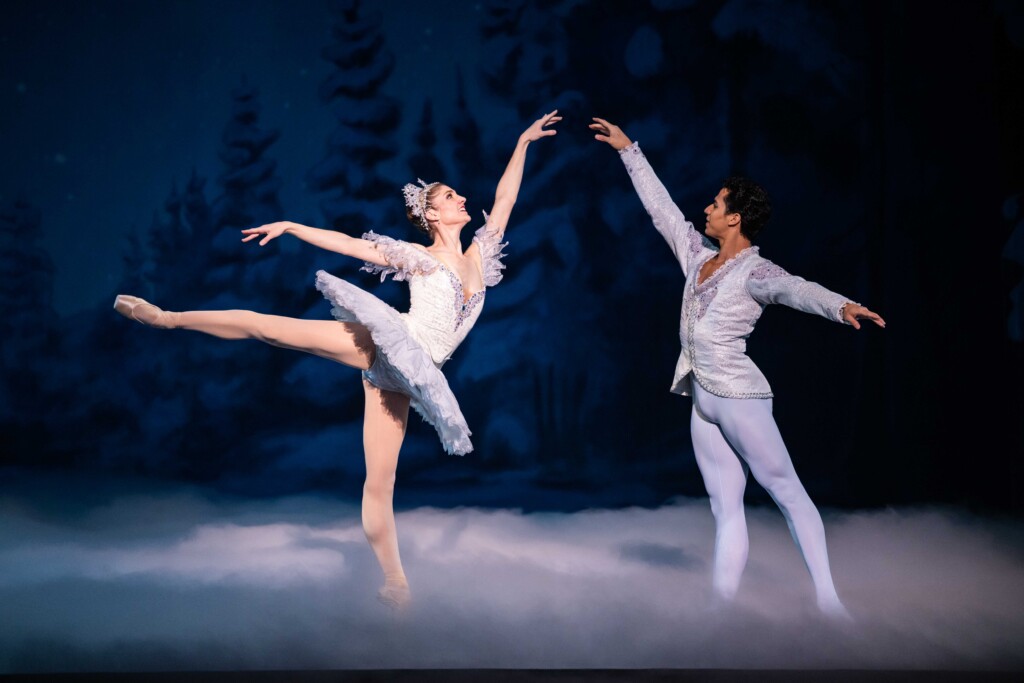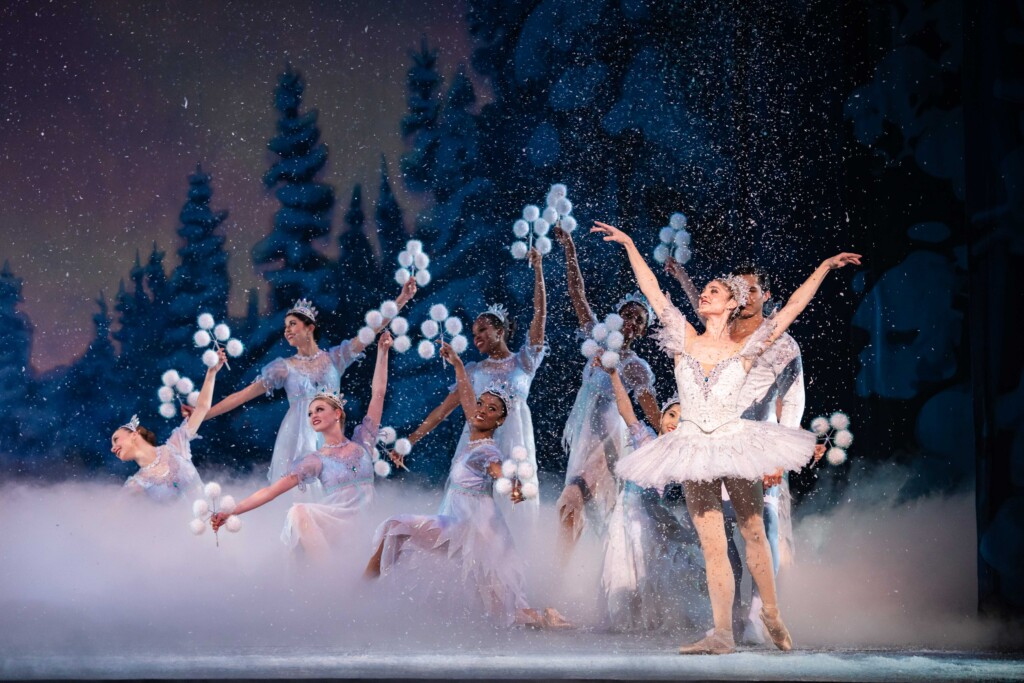It might surprise many readers that for critics, writing a review of The Nutcracker ballet is actually not as easy as it might appear. It is one of the most widely performed works in the end-of-the-year holiday season and audiences love it, whether it is in a lavish professional production or a small-town amateur community theater enterprise. Trying to come up with a fresh perspective on this ballet gem every holiday season is daunting.
Some critics have been brutal about the premise of a ballet that is loosely drawn from the classic 19th century children’s story The Nutcracker and The Mouse King by E.T.A Hoffmann. British musicologist David Brown, who wrote a critically acclaimed biography about Tchaikovsky in 2006, commented that it bewildered him why the composer should have been attracted to a story that was trite and pointless: “Why on earth a young girl should, for a mild act of sentimental unselfishness and the heroic deed of hurling her shoe at the back of an unsuspecting mouse, be rewarded by the grossest offering of glitter and candy beggars comprehension.”
But, other critics have taken a different path. In their 1991 book about best-loved ballets and modern dances, Nancy Reynolds and Susan Reimer-Torn wrote, “The Nutcracker is like a great big Christmas present – pretty, delightful, carefree, without conflict, and above all, meant for pure enjoyment.” Meanwhile, Simon Morrison, in an astute The Times Supplement essay from May 2015, elevates The Nutcracker, explaining that it is more than a trivial holiday treat for children. “Indeed, the ballet is perhaps most Hoffmannian in its embrace of contradictions, encompassing, sometimes in a single moment, the joyful and the tragic, the symbolic and the playful,” he wrote.
Relevant disclosure from a critic and a musician who has performed many Christmas programs and written prodigiously about the performing arts: This is my first published review of any Nutcracker production, including the Ballet West version which formally opened its Capitol Theatre run in downtown Salt Lake City on Dec. 2.
The verdict, however, is easy for me to write. Ballet West’s The Nutcracker is the finest end-of-the-year holiday season production of any kind I have ever seen in Utah and perhaps the entire U.S. It lives up to every letter of its promise and billing as America’s first and longest-running production of The Nutcracker.
Indeed, my sentiments hew closer to Morrison’s assessment than any other about what this holiday classic means. There are numerous gentle paradoxes in this magnificent Ballet West rendering, which was originally choreographed by Willam Christensen, the company’s founder, and which premiered on Christmas Eve in 1944 after he established the San Francisco Ballet.
Holiday memories and traditions are steeped in nostalgia and sentimentality but as we age and as the distance from our idealistic youth lengthens — which feeds our jaded cynicism and sarcasm — it can become too easy to lose the thrill of imagining a glorious world of fantasy, as Clara experiences. There are moments in the production that are unexpectedly moving in their bittersweet poignancy. More importantly, even us crusty realists can realize that we should have no reservations or feel silly or guilty about living vicariously through the wonder that unfolds on stage.
One unspoken strength of the exuberant magic is how Ballet West has sustained Christensen’s vision and legacy of conceptualizing a Russian classic in a unique American way that not only preserves the integrity of the original but sets forth a blueprint that can evolve with each new generation of performers and step forward in social enlightenment. As Adam Sklute, Ballet West’s artistic director, explains in a wonderful program note, “Mr. C [as Christensen was affectionately called by his colleagues] followed Petipa’s lead [Marius, with whom Lev Ivanov joined to choreograph the 1892 premiere] by giving many of the leading roles to children. Perhaps this was out of practical need – amidst World War II, he may not have had enough trained adult dancers to fill the multitude of dancing roles. However, by using so many children in the production, he brilliantly created a charming family show and also a built-in audience for it as parents, grandparents, siblings, and whole families would come to see their relative perform in a professional production.”

This has been the genius behind Salt Lake City’s excellence in so many realms of dance, in a region, which consistently punches well above its weight class per capita in this specific category of the performing arts. There are 75 children in each of the four rotating casts for the production run and the opening night demonstrated that an up-and-coming generation of dancers has as much impressive potential as their predecessors, should they decide to proceed in their ballet training. From the carolers and excited young party goers in the opening of Act 1 to participants in the smart, humorous battle choreography between the armies of The Nutcracker and the Mouse King and to servants proffering trays of treats and to the show-stealing octet of bumblebees popping out from under Mother Buffoon’s ingenious contraption of a costume, the children performed with the confidence of polished veterans.
The first act’s transformation from the Christmas Eve party festivities to the realm of fantasy is memorable, as the toys come to life for the battle. Clara (in an elegant opening night performance by Olivia Humeniuk) successfully distracts the Mouse King and allows The Nutcracker to vanquish his enemy. Christensen, who was well-known for his vaudevillian sensibilities, had crafted this scene precisely for the right combat-as-play effect. The Mouse King’s vanquishing is handled with the proper ham-acted emotion on stage (Tyler Gum). Then, the transformation of the Nutcracker toy into a handsome young royal (played with spot-on crown prince credibility on opening night by Vinicius Lima) brings the audience seamlessly into the winter landscape. We are transported to a clearing in a forest of fir trees while a snowstorm swirls and eventually eases in the Waltz of the Snowflakes, with the appearance of the Snow Queen and Snow King (Amy Potter and Brian Waldrep, splendidly performed).
The production is crisply paced, helped tremendously by the spot-on tempi provided by Jared Oaks, music director, and the Ballet West Orchestra. The high-spirited global choreographic tour of the second act in the Land of Sweets is a cavalcade to show off just how deep the bench of talent and artistry is among the Ballet West professional and children members in this extended family of performers. The assortment of divertissements is filled with rigorous demands of ballet technique as well as stamina and precision of control. As Sugar Plum Fairy and her Cavalier, Emily Adams and Hadriel Diniz, respectively, provided the opening night’s most wholehearted artistic moments, both in the iconic dance and the grand pas de deux.
The Spanish Dance (representing chocolate), reminiscent of flamenco and escuela bolera, bristled with flirtatious pride and the fervor of arched backs, flexing shoulders and the quintessential head toss, courtesy of David Huffmire, Kristina Weimer and Amber Miller. When the ballet’s current version was introduced in 2017, the Arabian and Chinese Dances, historically the two numbers most accused of negative stereotyping, were resolved with satisfying and notable updates. The Arabian Dance (representing coffee in the Land of Sweets) provides the most dramatic shift in pacing because of the music’s seductive, luscious character. The choreography has always been conceived to be provocative with high extensions, backbends and impressive contortions. But unlike the original expectations associated with the duet, Ballet West’s version is a more contemporarily enlightened ensemble, with soloists Kazlyn Nielsen and Dominic Ballard leading the group, performing magnificently as leading stars in a fabulous magic show, using rugs as props while executing sleight-of-hand movements with bold flourishes.
The Chinese Dance (representing tea) takes admittedly the musical score’s weakest set piece and transforms it into a short bravura demonstration of Chinese warrior skills (played to rip-roaring applause by Tyler Gum). He puts the finishing point on slaying the 36-foot-long dragon, which is maneuvered by seven dancers.
The Russian Trepak (representing candy canes) in its Cossack style, with Joshua Whitehead leading the way for the astounding acrobatic flair the dance piece requires, drew perhaps the loudest boisterous appreciation from the audience. Likewise, the Mother Buffoon number (with Robert Fowler) brought the audience to similar roars of appreciation. It is the closest nod to the Beehive State in this production and the eight bumblebees milked every moment of their stage presence, emboldened rightly by their precocious performing instincts. The Waltz of The Flowers, also one of the ballet’s most famous set pieces, swirled joyfully, with Jenna Rae Herrera and Jordan Veit as soloists. Likewise, the Dance of the Mirlitons (reed flutes and representing marzipan), with Chelsea Keefer as soloist, served a delicate yet divine palate cleanser between the fierceness of the Chinese and Russian Dances.

It is practically impossible to perceive that a Ballet West production of The Nutcracker will ever lose the allure that Christensen created in his studio many years ago and has remained fresh since it became a company mainstay in the 1950s. It is certainly a production that has stayed close to the Hoffmannian epiphany in the story upon which the ballet is based. Next to Dickens’ A Christmas Carol, it is a story that relates credibly to the timeless truths of our everyday lives. Sometimes, in the stories of childhood fantasies, the opportunity to be transported through a dream world so vivid and inspiring that the joy from experiencing it could be strong enough to find its way back to the world of realities is more than sufficient reason to let the wonders of The Nutcracker performance freely wash over ourselves.
It also is a feeling that can happen anytime we step into the concert hall and theater, regardless of the occasion. In its masterly execution, Ballet West’s The Nutcracker is a perfect gateway to discover that meaningful connections to the art of dance, music and theater can happen any day of the year.
Performances continue through Dec. 24. For tickets and more information, see the Ballet West website.





